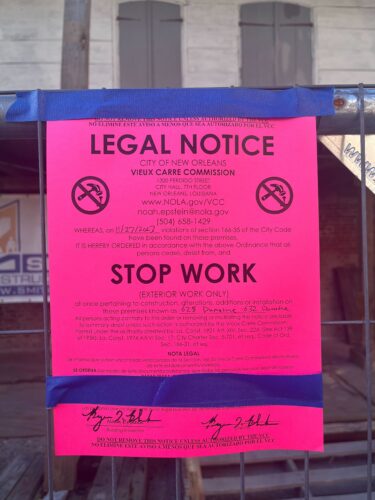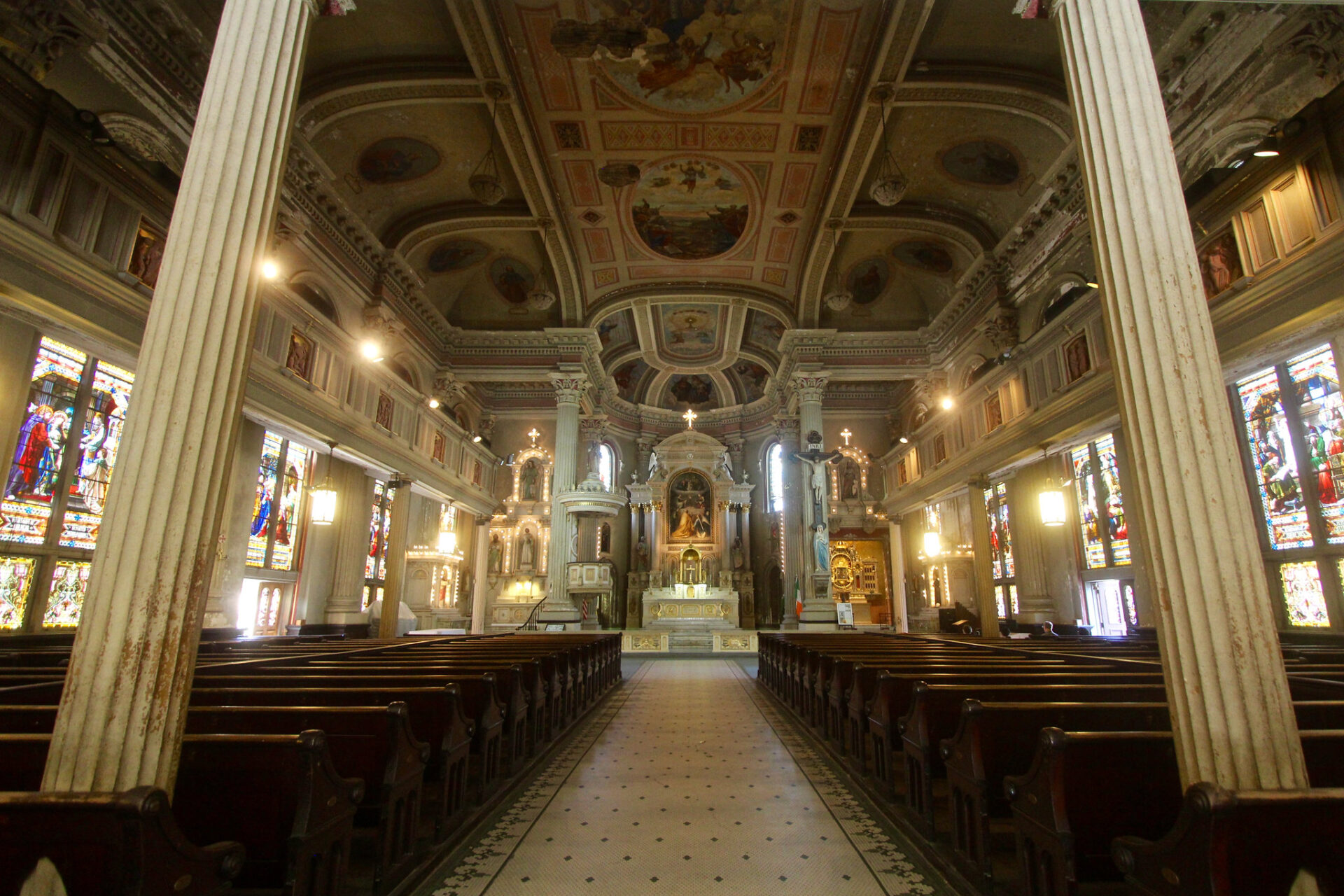After a new city legal opinion, the Vieux Carré Commission (VCC) has issued a Stop Work Order for construction happening at the state-owned Madame John’s Legacy property, 632 Dumaine St. The order comes after the legal department for the City of New Orleans determined that the VCC has jurisdiction over work performed on state-owned buildings in the French Quarter.
The Stop Work Order is a promising plot twist inthe problematic renovation underway at Madame John’s Legacy, a state museum and national historic landmark which is the only extant example of French Colonial residential architecture remaining in the Vieux Carré.
Even before work started at the museum in 2022, the preservation community voiced concerns that the state’s renovation plans did not follow best practices for historic preservation. These fears continued after work commenced. The state’s contractors and architects, hired by the Office of Facility Planning and Control, ignored guidelines established by the Secretary of the Interior’s Standards for the Treatment of Historic Properties, going against the advice of the State Historic Preservation Office, the National Park Service, the VCC, local preservation organizations and experts, and even the preservation consultant hired by the Louisiana State Museum Board, which oversees the operation of the museum. The result has been a mishmash of work without regard for the period of significance (the 1820s) recommended for the restoration, jeopardizing the architectural and historic integrity of the building.
Until now, the renovation has proceeded with the understanding that the state is exempt from the VCC’s oversight — that is, the state government does not have to adhere to local preservation laws that all private property owners must follow. The City of New Orleans’ Law Department recently challenged this assumption, citing a case that was brought to the Louisiana Supreme Court in 1998 after the VCC denied the construction of a fence around the state-owned Cabildo. At that time, the court ruled against the VCC; however, in its current legal review, the city attorney noted that the court did not question the VCC’s authority over state-owned buildings. Rather, it found the VCC’s denial to be unreasonable because the fence was intended to protect the historic property. The analysis reinforces that the VCC and the state share the common goal of ensuring the maintenance and protection of historic buildings. By authorizing the VCC to oversee future work, there is hope that the state will change course and follow best practices to ensure the survival of Madame John’s Legacy.







